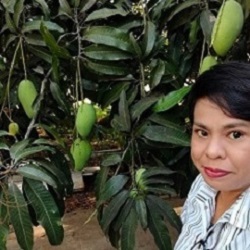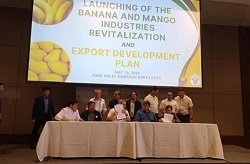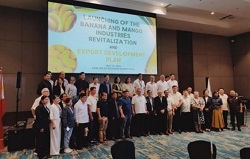
I. Introduction
The Philippines holds a significant position in the global export market for bananas and mangoes, with these fruits being vital to the nation's agricultural economy. The Department of Agriculture (DA) has developed strategic roadmaps for both industries, aiming to enhance export performance, ensure sustainability, and promote inclusive growth. This analysis critically examines these plans, identifying their strengths and weaknesses, and proposes actionable recommendations to bolster their effectiveness.
II. Banana Industry Export Development Plan
A. Strengths
- Market Positioning: The Philippines ranks among the top global exporters of bananas, particularly the Cavendish variety, with Mindanao as the primary production hub. Panabo City, known as the "Banana Capital of the Philippines," exemplifies this dominance, housing the world's largest banana plantation operated by TADECO.
- Strategic Goals: The Banana Industry Roadmap 2021–2025 outlines objectives such as increasing productivity, enhancing disease management, and expanding market access, aligning with national development goals.
B. Weaknesses
- Disease Management: The industry faces significant challenges from diseases like Fusarium wilt (Panama disease). The roadmap lacks detailed strategies for comprehensive disease control and prevention.
- Infrastructure Deficiencies: Inadequate post-harvest facilities and logistics infrastructure hinder the efficient transport and export of bananas.
- Smallholder Inclusion: The roadmap does not sufficiently address the integration of smallholder farmers into the export value chain.
III. Mango Industry Export Development Plan
A. Strengths
- Quality Recognition: The Philippine Carabao mango is internationally acclaimed for its sweetness and quality.
- Stakeholder Engagement: The Mango Industry Roadmap 2021–2025 was developed through a participatory approach.
- Strategic Objectives: The roadmap sets clear targets, including reducing post-harvest losses from 30% to 5% by 2025, and expanding market access.
B. Weaknesses
- Production Constraints: The industry is characterized by small-scale farms averaging 1.34 hectares, making it difficult to scale up.
- Post-Harvest Handling: High post-harvest losses due to inadequate handling, storage, and transportation infrastructure remain an issue.
- Compliance with Standards: Meeting international SPS standards limits market access, especially for smaller producers.
IV. Recommendations and Action Plan
- Enhance Disease Management: Invest in research and development for disease-resistant varieties and implement integrated pest management systems.
- Improve Infrastructure: Develop modern post-harvest facilities and transportation systems.
- Support Smallholder Farmers: Provide capacity-building programs, financing access, and cooperative development.
- Strengthen Compliance Mechanisms: Establish training and certification programs to meet SPS and export standards.
- Market Diversification: Explore non-traditional markets to reduce dependency on a few countries.
- Policy and Institutional Support: Streamline regulations and enhance institutional oversight for roadmap implementation.
V. Conclusion
The Export Development Plans for the Philippine banana and mango industries present a strategic framework aimed at enhancing competitiveness and ensuring sustainable growth. While the plans identify key objectives and involve stakeholder participation, addressing the highlighted weaknesses through targeted interventions is crucial. Implementing the recommended action plan will bolster the industries' capacities, promote inclusive development, and solidify the Philippines' position in the global fruit export market.
References
- Philippine Council for Agriculture and Fisheries. (2021). Philippine Banana Industry Roadmap 2021–2025. Retrieved from https://pcaf.da.gov.ph/index.php/cir-banana/
- Department of Agriculture. (2021). Philippine Mango Industry Roadmap 2021–2025. Retrieved from https://www.scribd.com/document/674834362/Philippine-Mango-Industry-Roadmap
- Department of Trade and Industry. (2018). The Philippines in the Mango Global Value Chain. Retrieved from Download PDF
- Wikipedia contributors. (2025). Panabo. In Wikipedia. Retrieved from https://en.wikipedia.org/wiki/Panabo
- Wikipedia contributors. (2025). Carabao mango. In Wikipedia. Retrieved from https://en.wikipedia.org/wiki/Carabao_mango







